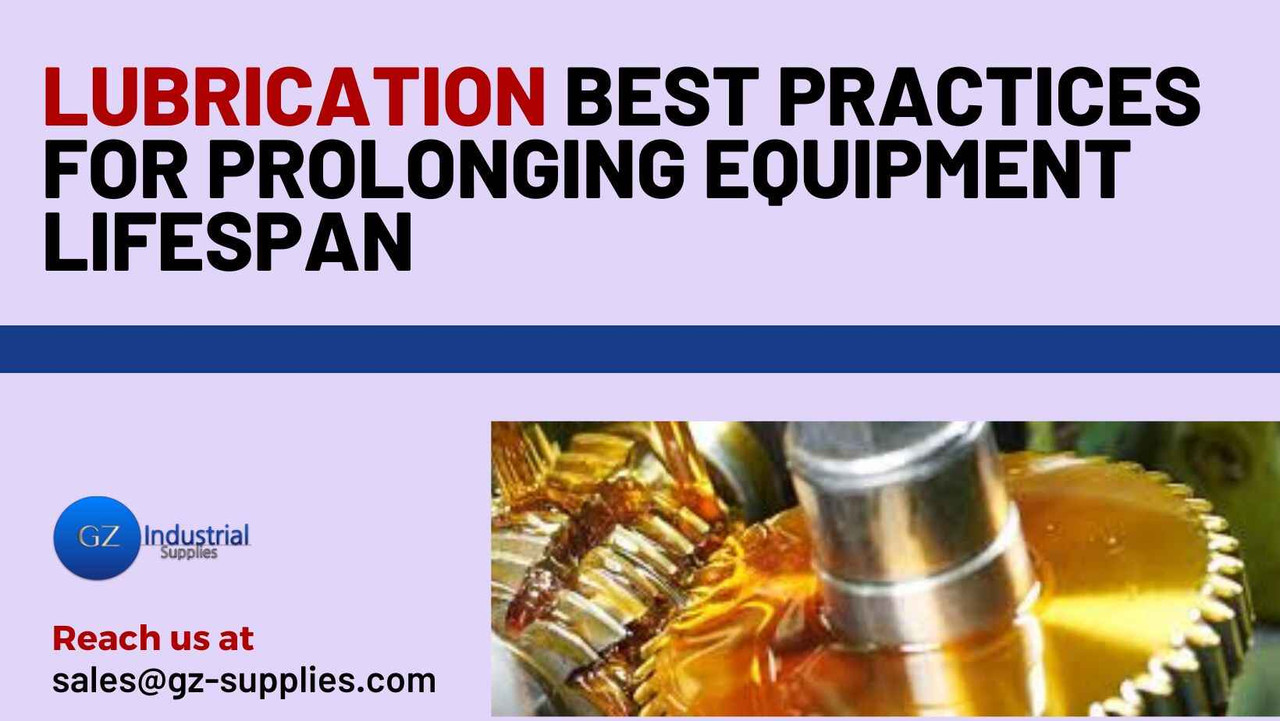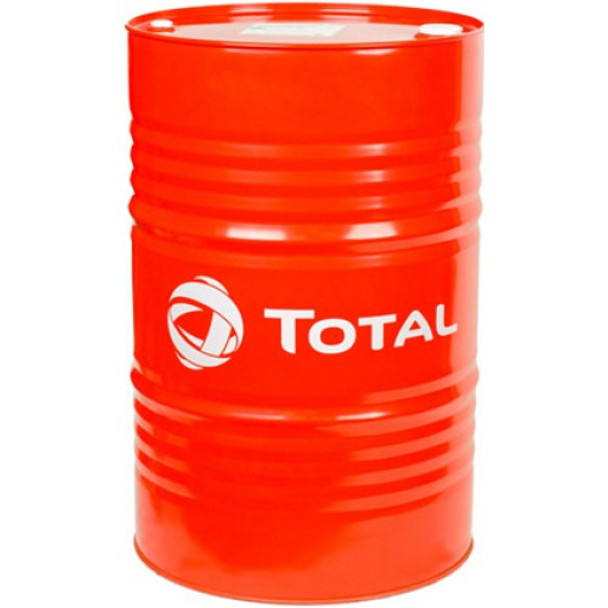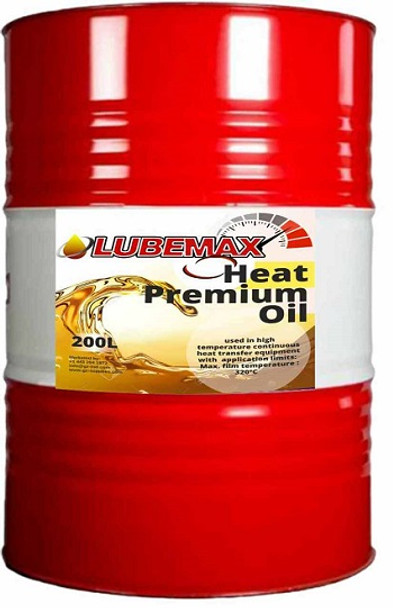Lubrication Best Practices for Prolonging Equipment Lifespan
Key Takeaway
- Proper Lubrication Minimizes Wear: Regular, appropriate lubrication reduces friction, extending equipment life and enhancing efficiency.
- Choose the Right Lubricant: Use lubricant types—oil, grease, or synthetic—suitable for specific machinery and conditions.
- Set and Follow Lubrication Schedules: Consistent schedules prevent over-lubrication and under-lubrication, minimizing breakdowns.
- Consider Automated Solutions: Automated and condition-based systems offer precise, timely lubrication, especially for high-maintenance equipment.
Introduction
Effective lubrication is crucial for extending equipment lifespan, as it minimizes wear and tear, reduces friction, and prevents overheating. Following best practices, such as choosing the right lubricant type—be it oil, grease, or synthetic—based on machinery needs and operating conditions, is essential for optimal performance. Setting regular lubrication schedules tailored to usage patterns helps maintain consistent protection against breakdowns, while automated systems provide precision and reduce manual effort.
Additionally, training employees on correct application methods ensures they are well-equipped to handle routine lubrication tasks, ultimately enhancing reliability and maximizing the operational lifespan of equipment.
Total Azolla ZS 68 205L Drum
Understanding Lubrication Fundamentals
Basics of Lubrication and Friction Reduction
Lubrication works by creating a thin film between moving parts, which reduces friction, dissipates heat, and protects against corrosion. In heavy machinery, for instance, bearings and gear systems benefit significantly from this protective layer, preventing heat buildup and slowing down wear rates.
Types of Lubricants and Their Uses
There are various types of lubricants, each suited for specific functions:
1. Oil-Based Lubricants: Ideal for high-speed applications, as they flow easily and quickly dissipate heat.
2. Grease-Based Lubricants: Grease is a thicker lubricant, typically used in slower-moving machinery where staying in place longer is advantageous.
3. Synthetic Lubricants: These are specially formulated to withstand extreme conditions, like high heat or heavy loads, making them suitable for specialized industrial applications.
4. Specialty Lubricants: Some lubricants are designed for unique situations, such as food-safe lubricants for the food processing industry or biodegradable options for environmentally sensitive areas.
Choosing the right lubricant depends on equipment type, operating environment, and required performance.
How Lubricant Properties Affect Performance
Lubricants come in various viscosities (thicknesses) and temperature tolerances. High-viscosity lubricants are generally better for high-load, low-speed applications, while lower viscosity is suitable for high-speed, low-load settings. Understanding these properties is essential for ensuring that lubricants perform optimally under the equipment's operating conditions.
Mobilux EP 2 Grease Oil
Steps to Implement Effective Lubrication Practices
1. Identifying Lubrication Points
Each piece of equipment has specific components that require lubrication, such as bearings, gears, chains, and joints. Identifying these lubrication points is the first step toward creating a robust lubrication plan. Many manufacturers provide guidelines on which parts need lubrication and how often, and using these as a reference helps prevent wear and tear.
2. Setting Lubrication Schedules
A regular lubrication schedule ensures consistency and reduces the likelihood of missing critical maintenance intervals. The frequency of lubrication varies based on factors like equipment usage, environmental conditions, and operational demands. For instance, machinery exposed to dusty or high-temperature environments may need more frequent lubrication. Generally, setting schedules that align with the manufacturer’s recommendations is an excellent place to start.
3. Choosing the Right Lubricant
Selecting the proper lubricant for each application is crucial. The right choice depends on factors such as temperature range, load, speed, and specific equipment requirements. Using the wrong lubricant can lead to premature wear, overheating, and even equipment failure. Many industries rely on synthetic or specialty lubricants to handle harsh operating conditions effectively.
4. Application Techniques
Proper application techniques ensure even distribution of the lubricant, which optimizes protection and performance. Methods include:
Manual Application: Common for smaller or easily accessible equipment.
Automated Lubrication Systems: These systems deliver consistent amounts of lubricant at specified intervals and are ideal for larger industrial setups.
Mist Lubrication: Common in high-speed machinery, this method delivers a fine mist of lubricant to reduce wear and cooling effects.
Common Lubrication Mistakes and How to Avoid Them
1. Over-Lubrication and Under-Lubrication
Applying too much lubricant can lead to excess heat generation and pressure, causing seals to fail. Conversely, under-lubrication results in insufficient protection, accelerating wear. It’s essential to follow recommended lubrication levels and intervals to prevent these issues.
2. Incorrect Lubricant Selection
Using an unsuitable lubricant can negatively impact performance. For example, using a high-viscosity lubricant in a high-speed application can cause overheating and energy loss. Always match the lubricant type and viscosity with the specific equipment and operational requirements.
3. Ignoring Environmental and Equipment Factors
Environmental conditions such as temperature, humidity, and contamination levels affect lubrication needs. Dusty or wet environments, for instance, may require more frequent lubrication or specialized lubricants. Factoring in these conditions is essential to avoid unexpected failures.
LubeMax HI-Gear Max 80W90 25L
Innovative Lubrication Techniques and Tools
1. Automated Lubrication Systems
Automated lubrication systems deliver precise amounts of lubricant at regular intervals, reducing the need for manual checks and ensuring consistent lubrication even in hard-to-reach areas. This method is ideal for equipment with multiple lubrication points or machinery operating in hazardous or hard-to-access locations. It enhances accuracy, minimizes waste, and saves time.
2. Condition-Based Lubrication
Condition-based lubrication involves using sensors and monitoring tools to track equipment conditions in real time. These systems can detect changes in temperature, vibration, or lubricant condition, alerting operators when lubrication is needed. By relying on actual equipment data, condition-based lubrication prevents over- or under-lubrication and supports proactive maintenance.
3. Advanced Synthetic Lubricants
Advancements in synthetic lubricants have made them particularly effective in high-temperature, high-load, and chemically demanding environments. Synthetic lubricants are engineered to offer extended performance, making them cost-effective for heavy industrial applications where high reliability is essential. These lubricants also handle wider temperature ranges, making them suitable for varied industrial environments.
Benefits of a Well-Executed Lubrication Program
1. Extended Equipment Lifespan and Reduced Wear
A well-maintained lubrication program significantly extends the lifespan of equipment, reducing wear on components like bearings, chains, and gears. By maintaining proper lubrication, equipment operates more smoothly and can withstand heavier usage without degrading quickly.
2. Minimized Maintenance Costs and Operational Downtime
Regular and effective lubrication reduces the need for unscheduled maintenance, which can be costly and time-consuming. By minimizing breakdowns and extending intervals between major repairs, lubrication helps lower maintenance costs and keep machinery running longer with fewer disruptions.
3. Improved Operational Efficiency and Productivity
Proper lubrication reduces friction, which in turn decreases energy consumption and improves operational efficiency. Well-lubricated equipment requires less power to operate, leading to energy savings and enhanced productivity. In industrial settings, efficient operation of machinery also means fewer delays and a smoother workflow.
LubeMax multipurpose lithium grease ep2
Case Studies and Real-World Examples
1. Manufacturing Plant with Automated Lubrication Systems
A manufacturing plant that implemented automated lubrication systems saw a significant decrease in equipment wear and maintenance frequency. By automating the lubrication process, the plant experienced a 20% increase in machinery uptime and reduced lubricant waste by 30%.
2. Heavy-Duty Construction Equipment with Condition-Based Lubrication
In the construction industry, heavy-duty equipment operators have adopted condition-based lubrication to monitor lubricant quality and reapply only when needed. This approach has helped operators extend equipment life, save on lubricant costs, and avoid costly breakdowns during peak project times.
3. Mining Industry with Synthetic Lubricants
Mining companies often use advanced synthetic lubricants for machinery operating in extreme temperatures. These lubricants help protect equipment from heavy wear and minimize the impact of abrasive particles in harsh environments, reducing both downtime and repair costs.
Creating a Lubrication Maintenance Plan
1. Steps to Build a Customized Lubrication Plan
Creating a structured maintenance plan ensures consistent lubrication practices, reduces the risk of missed intervals, and improves overall equipment health. Start by identifying all machinery and noting lubrication points, types of lubricants required, and recommended intervals. This information can help tailor the plan to meet specific operational needs.
2. Integrating Maintenance Logs and Tracking Systems
Maintenance logs and digital tracking systems allow teams to document lubrication activities, monitor intervals, and address issues promptly. These tools are particularly beneficial in large-scale operations where tracking multiple machines can become challenging.
3. Tips for Employee Training and Involvement in Lubrication Practices
Training employees on proper lubrication techniques, schedules, and safety practices can enhance the effectiveness of a maintenance program. By involving team members in preventive maintenance, companies can ensure a consistent approach and address lubrication needs proactively.
LubeMax Heat Premium Oil 200L
Frequently Asked Questions
1. How do I choose the right lubricant for my equipment?
Selecting the right lubricant depends on factors like load, speed, operating temperature, and environmental conditions. Consult your equipment manual or speak with a specialist to ensure compatibility.
2. What is the difference between oil-based and grease-based lubricants?
Oil-based lubricants are generally better for high-speed applications as they flow freely and dissipate heat quickly. Grease-based lubricants are thicker, making them ideal for parts where longer-lasting protection is required.
3. How often should equipment be lubricated?
Lubrication frequency varies based on equipment type, usage, and operating conditions. Always refer to the manufacturer’s guidelines and monitor equipment performance to determine the appropriate intervals.
4. How does temperature affect lubrication?
Extreme temperatures can affect lubricant viscosity and performance. High temperatures may cause thinning, while low temperatures can lead to thickening. Specialized lubricants are available for equipment operating in extreme conditions.
5. Can I automate the lubrication process?
Yes, automated lubrication systems are available to provide consistent and precise lubrication at regular intervals. These systems are ideal for hard-to-reach areas and high-maintenance environments, improving both accuracy and efficiency.
Related Articles
Importance of Lubricants for Machine Maintenance
Proper Grease Selection for Marine Equipment
Impact of Lubricant Quality on Machinery Performance
Readers also Watched...
Conclusion
Adopting best practices in lubrication is a straightforward yet powerful way to prolong equipment lifespan, reduce downtime, and maintain efficiency across operations. By implementing a tailored lubrication plan, choosing the right lubricants, and avoiding common mistakes, industries can achieve significant cost savings and improved productivity. A well-executed lubrication strategy isn’t just a maintenance tactic—it’s a strategic approach to maximizing asset value and operational success.
For high-quality industrial lubricants, lubrication tools, and expert advice, visitGZ Industrial Supplies. Their comprehensive selection and technical support can help you establish and maintain effective lubrication practices for your equipment.













